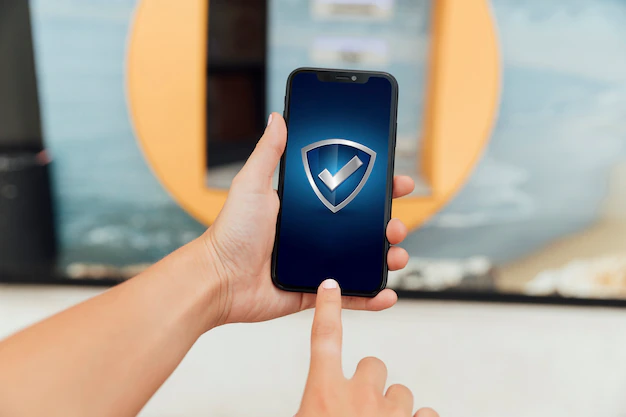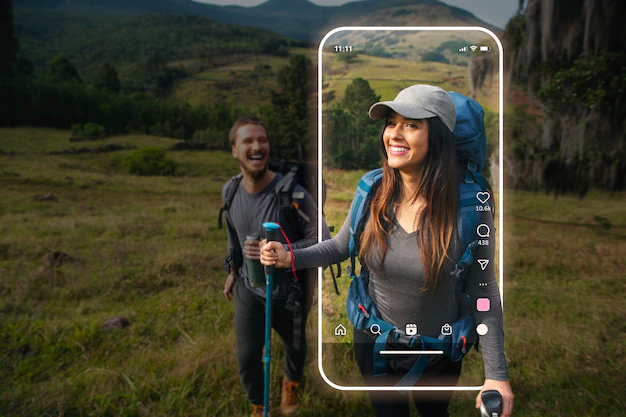Traveling has evolved significantly in the modern age, with smartphones, tablets, and laptops becoming indispensable companions on our journeys. While these devices enhance our travel experience, they also introduce concerns about privacy and security.
In this blog, we’ll look into the essential elements of a traveler’s toolkit, focusing on the delicate balance between staying connected and safeguarding your privacy.
Secure Connectivity Essentials
In the quest for connectivity, security should be a top priority. It is common to expect unfamiliar settings when you are away from home. However, compromising on security can be the worst idea sometimes. Hence, here are a few essential practices to ensure secure connectivity while on the road:

Navigating Public Networks Via Safe Public Wi-Fi Practices
Public Wi-Fi networks are a convenient way to stay connected but can be hotspots for cyber threats. Employ these safe practices and integrate them in your traveler’s toolkit:
- Use Virtual Private Networks (VPNs): A VPN encrypts your internet connection, preventing hackers from accessing your data on public networks. This will keep your private networks safe when you are out in the public.
- Avoid Sensitive Transactions: Refrain from accessing sensitive information like online banking while connected to public Wi-Fi. Save these activities for secure networks.
- Forget Networks After Use: Your device may automatically connect to known networks. Turn off this feature and forget networks once you’ve finished using them.
Device Security on the Go
- Set Secure Passwords: Protect your devices with strong, unique passwords. Prevent using data that are easily guessable, like names or birthdays, as hackers mostly make use of them for malicious activities.
- Enable Biometric Authentication: Leverage fingerprint or facial recognition features for an additional layer of security. Even if someone knows how to unlock your phone, they can never put their fingerprints instead of yours.
- Schedule Regular Software Updates: Keep your device’s apps and operating system updated to patch vulnerabilities and enhance security. As long as they are updated, there’s nothing to worry about your device’s security.
Smart Packing For Tech
When preparing for your journey, consider smart packing strategies to ensure you own the right tech essentials without compromising security:
- Portable Chargers and Power Banks: Keep your devices on the go to avoid relying on unknown charging stations, which may pose security risks.
- Travel Adapters: Carry the necessary travel adapters to ensure your devices can be charged in different regions without relying on public charging stations.
- External Storage Devices: Back up important data to external drives or cloud storage to protect against loss or theft.
Social Media Awareness
While sharing travel moments on social media can be enticing, it’s crucial to be aware of potential privacy risks:
- Review Privacy Settings: Adjust your social media privacy settings to control who sees your posts, limiting exposure to a select audience.
- Limit Real-Time Updates: Consider sharing updates after leaving a location to avoid broadcasting your current whereabouts in real-time.
- Be Mindful of Geotagging: Disable location services and geotagging on photos to prevent inadvertently revealing your precise location. Use appropriate post captions for travel content and not something that can reveal too much information.

Location Tracking And Geotagging
- Location Services Settings: Review and customize location settings for apps on your device—Disable location services for apps that don’t require it.
- Turn Off Geotagging: Disable geotagging features on your device’s camera to prevent location information from being embedded in your photos.
Related: How To Experience The Best Of Tuscany: Travel Tips For Italy’s Heartland
Privacy On The Road
AI is advancing, and so are new threats every day. Privacy is important on the road, too, because even a small mistake can lead you to big troubles. Therefore, don’t let that happen! Below are a few important strategies that can help you get on the road smoothly without compromising your network.
Risks And Threats
Understanding potential risks and threats is essential to implementing effective privacy measures. Your traveler’s toolkit should address the following risks:
- Public Charging Stations: Avoid using public USB charging stations, as they may have compromised cables that can transfer data or install malware on your device.
- Malicious Networks: Cybercriminals may set up fake Wi-Fi networks with names similar to legitimate ones. Verify network names with trusted sources.
Ensuring Message Security
- End-to-end Encryption: Use messaging apps with end-to-end encryption to secure your communications, not to read other people’s messages on my phone. It helps to boost Apps like Signal and WhatsApp to prioritize user privacy.
- Secure Email Practices: If you need to access sensitive information via email, ensure that your email provider offers secure and encrypted communication options.
Tips For Enhanced Message Security
- Avoid Public Computers: Refrain from accessing sensitive information, especially email, on public computers, which may have compromised security.
- Logout After Use: Always log out of your accounts after use, especially on shared or public devices.
- Use Temporary Email Accounts: Consider using temporary or disposable email accounts for travel-related accounts or reservations.

Conclusion
As we embark on journeys filled with digital marvels, balancing connectivity and privacy is crucial. The traveler’s toolkit outlined here provides essential guidelines to navigate the digital landscape securely. By adopting these practices, you can enjoy the benefits of technology while minimizing potential risks.
Whether exploring bustling cities or remote landscapes, a conscious approach to technology ensures a safer and more enjoyable travel experience. With this, I conclude my words here. Make sure to save this article and use it later. But most importantly, travel safely!
Read Also:













